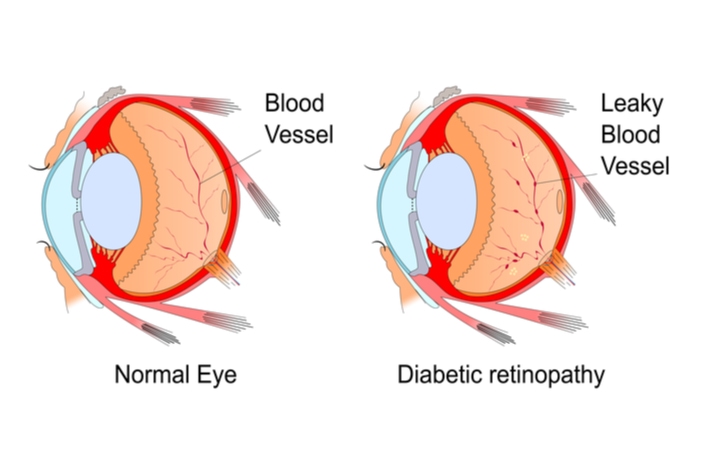Blurry vision can seem insignificant, but it’s a symptom linked to several different eye conditions. It may be digital eye strain, or it could be a more pressing vision issue. If you’re experiencing blurry vision, what are some of the possible causes?
Continue reading to learn more about some of the 7 causes of blurry vision and their treatments.
Refractive Error
Refractive errors are a type of vision problem that affects your ability to see clearly. These conditions happen when the shape of your eye prevents light from focusing correctly on your retina.
Refractive errors are the most common vision problem; over 150 million Americans have one. 4 main types of refractive errors exist:
Treatment
There are a few possible options for treating refractive errors, including:
All of these treatment options focus on correcting your refractive error so that light focuses correctly inside of your eye. If you’re experiencing blurry vision, visit your eye doctor for an eye examination.
Age-Related Macular Degeneration
Age-related macular degeneration (AMD) is an eye disease that causes progressive decay of your macula. This condition affects your central vision while your peripheral vision stays the same. AMD symptoms include blurry vision, dark areas in the center of your vision, and different color perceptions.
There are 2 forms of AMD:
- Dry AMD: Dry AMD progresses slowly as light-sensitive cells in your macula become thinner and die off, leading to loss of central vision.
- Wet AMD: Wet AMD occurs when abnormal blood vessels begin leaking blood and fluid into the macula. This form of AMD is a medical emergency. Symptoms can progress fast, leading to vision loss.
Treatment
While AMD has no cure, several treatments can help manage this condition. These treatments include:
- Anti-angiogenesis drugs
- Laser therapy
- Low vision aids
Cataracts
A cataract is the clouding of your eye’s lens. This condition is typically age-related and can affect your ability to see, read, or drive. While this condition isn’t noticeable in earlier stages, your vision may begin to feel as if you’re looking through a foggy or frosted window.
Some symptoms of cataracts include:
- Clouded, blurry, or dim vision
- Light sensitivity
- Need for brighter lights to read
- Seeing halos around lights
Treatment
Your optometrist may recommend a stronger prescription for your lenses at first if you have cataracts. Outside of stronger prescriptions, the only effective treatment for cataracts is surgery.

Diabetic Retinopathy
Diabetic retinopathy is a condition that can affect people with type 1 or type 2 diabetes. You may not notice symptoms until this condition progresses, leading to potential vision loss. There are two stages of this disease, nonproliferative and proliferative diabetic retinopathy.
Nonproliferative diabetic retinopathy occurs when tiny bulges (microaneurysms) break from the walls of blood vessels in your eyes and cause fluid and blood to leak into your retina.
Proliferative diabetic retinopathy occurs when blocked blood vessels stop oxygen flow to the retina. This event causes new blood vessels to develop, which can result in significant side effects.
Treatment
Your eye doctor will start treatment depending on the severity of this condition. You can’t recover damage to your eyes, but treatment may help prevent your vision from worsening.
Diabetic retinopathy treatments include:
- Injections
- Laser treatment
- Eye surgery
Corneal Abrasion
A corneal abrasion is a scratch on your cornea, the front surface of your eye. Your cornea may become scratched by several different types of material, including sand, dirt, dust, wood shavings, metal particles, or contact lenses.
Other signs of a corneal abrasion include:
- Pain
- Tearing eyes
- Redness
- Light sensitivity
- Headache
Treatment
It’s important to have a corneal abrasion treated professionally. The scratch may become infected if left untreated. Before you get to your eye doctor, you can take several steps to prevent discomfort and remove any debris:
- Rinse your eye with clean water or a saline solution
- Blink to remove debris
- Pull your upper eyelid over the lower lid to stimulate tears
Conjunctivitis (Pink Eye)
Conjunctivitis, or pink eye, is an inflammation or infection of the conjunctiva, which lines your eyelid and covers the white of your eye. When inflammation worsens, it can cause your vision to become blurry.
This condition has several causes, including:
- Viruses
- Bacteria
- Allergies
- A foreign object in the eye
These causes create different forms of pink eye, known as viral, bacterial, and allergic conjunctivitis.
Treatment
Pink eye typically subsides with time, so treatment focuses on symptom relief. This treatment may include using artificial tears, cleaning your eyelids with a wet cloth, or applying warm or cold compresses.
Allergic conjunctivitis is different because allergens cause these symptoms. Treatment may include specialized eye drops or over-the-counter antihistamines and anti-inflammatory medications.
Eyestrain
Eyestrain is a common condition where your eyes become tired from overuse. Your eyes may feel dry, sore, or itchy. Some common causes of this condition include:
- Looking at digital devices
- Reading without pausing to rest your eyes
- Doing activities with extended focus
- Being exposed to bright light
- Straining to see in dim light
Treatment
While eyestrain may feel irritating, it doesn’t have any lasting effects. Treatment for this condition focuses on prevention, including making changes to your daily habits and environment. Speaking with your optometrist can help identify the best ways to make these improvements.
Don’t Ignore Blurry Vision
Blurry vision can be difficult to diagnose because it’s linked to many different eye conditions. No matter why you think your vision is blurry, visit your eye doctor for a comprehensive eye exam. Your symptoms may be a sign of an underlying issue.
If you’re experiencing blurry vision or other issues, book an appointment with your optometrist.



